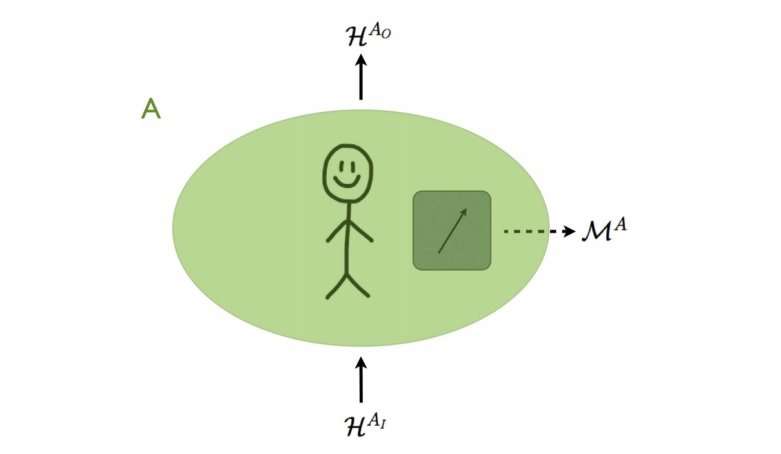May 14, 2018 feature
New quantum probability rule offers novel perspective of wave function collapse

Quantum theory is based heavily on probabilities, since measuring a quantum system doesn't produce the same outcome every time, but instead yields one of many outcomes that each occur with a certain probability. Now in a new paper, physicists have presented a new quantum probability rule for assigning probabilities to measurement outcomes, or events, that essentially combines two of the most important quantum probability rules (the Born rule and the wave function collapse rule) into one.
The physicists, Sally Shrapnel, Fabio Costa, and Gerard Milburn, at The University of Queensland in Australia, have published a paper on the new quantum probability rule in the New Journal of Physics.
One of the most important probability rules in quantum theory is the Born rule, which gives the probability that a measurement yields a certain event. However, things get a little bit more complicated when predicting consecutive events. Although in classical scenarios it's possible to assign joint probabilities to consecutive events using conditioning, in quantum scenarios this is not possible since each measurement necessarily disturbs the system. So in quantum mechanics, the state must be updated with this new information after every measurement.
In order to update the state, a "state update rule" or "collapse rule" is applied. In the new paper, the physicists explain that this update is basically an "ad hoc ingredient," since it is introduced as an axiom (which cannot be proved), and is a completely separate entity from the Born rule. Although this additional rule works well for practical purposes, it poses problems for understanding the true nature of quantum theory—in particular, for interpretations of quantum theory as a statement about the knowledge of reality, rather than of reality itself.
To address these problems, the physicists propose and prove a unified probability rule, which they call the "Quantum Process Rule." They show that this rule is more fundamental than the Born rule, as both the Born rule and the state update, or collapse, rule can be derived from this new rule—that is, the update rule does not need to be independently introduced. Unlike the Born rule, the Quantum Process Rule can assign joint probabilities to consecutive events.
One of the interesting implications of showing that wave function collapse follows from the new probability rule is that it suggests that the collapse does not need to be regarded as a fundamental aspect of quantum theory. This implication offers an alternative perspective of wave function collapse, as well as a new understanding of the nature of quantum theory.
"The main significance of the work is that we derive a single, unified probability rule that subsumes both the Born rule and the collapse rule," Shrapnel told Phys.org. "This means that one no longer needs to explain wave function collapse in terms of a physical process, but can instead view this part of the formalism as simply a case of classical probabilistic conditioning. It is this latter possibility that means we can consider the quantum state as being about our knowledge rather than a direct description of physical reality."
More information: Sally Shrapnel, Fabio Costa, and Gerard Milburn. "Updating the Born rule." New Journal of Physics. DOI: 10.1088/1367-2630/aabe12
Journal information: New Journal of Physics
© 2018 Phys.org



















